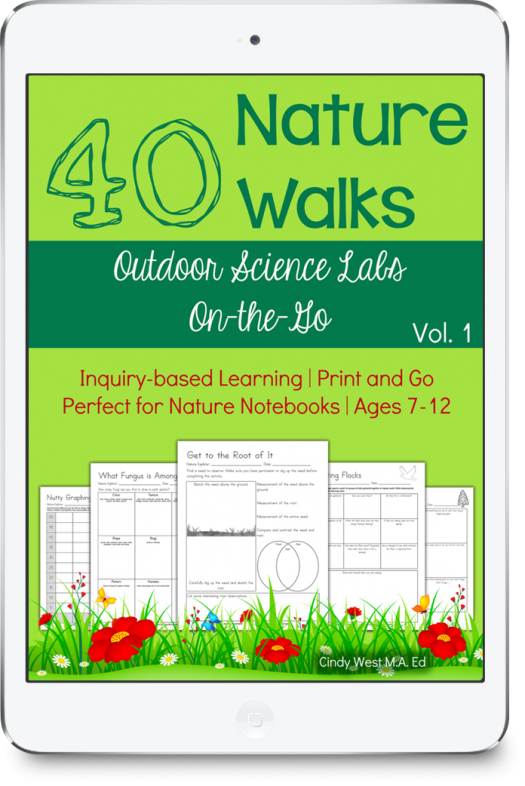How do you get children to slow down and observe things on a nature walk? It can be difficult to get their attention focused long enough to accomplish anything worthwhile. Cindy West has solved that problem with 40 Nature Walks: Outdoor Science Labs On-the-Go, Volume 1 and Volume 2. These two books (in PDF format) present narrowly focused nature walks that direct students’ attention as they search for or observe particular things on each walk.
Each book is a collection of one-page activity sheets to be used for outdoor exploring, observing, collecting, and other activities. The first volume is suggested for ages 7 through 12, and the second is recommended for ages 8 through 13. If you have younger children, you can take them along to hunt and observe even if they don’t complete an activity sheet.
The activity sheets might fit in with some of your other science studies, but it is probably best to use them without worrying about correlating them with another course. If you use them once a week, you will have more than enough for a school year, even if you skip a few that aren’t practical where you live. Some activity sheets might be used more than once or in different types of settings. For example, the page titled, “No Regular Rock” has students focus on only one rock as they analyze its characteristics. That same sheet could be used with an entire rock collection.
Most of these activity sheets can be used without any preparation other than figuring out where you will go. You’ll want to explore many different locations on these nature walks since students will be searching for different types of things each time.
For a few activities, children need some prior preparation. For example, the page titled “Is It This or That?” has students complete a Venn diagram comparing two things that they can observe in nature that have at least some commonalities─things like spiders and insects predators and prey, and deciduous and evergreen trees. Then on the nature walk, students will sketch or list creatures or items they find under each category from their diagram. You can see why students should take their activity sheet on a clipboard since they will write and draw on it while on the nature walk.
Nature walks in the first volume are grouped under the categories of general scavenger hunts, physical science, earth science, animals, plants, and seasonal. The second volume arranges nature walks under the categories of general scavenger hunts, mathematical walks, language arts walks, physical science, earth science, habitats, animals, plants, and seasonal. You might wonder how language arts and math figure in nature walks. One of the math walks has students find and name patterns in nature, and one of the language arts walks has students write similes and metaphors to describe things they observe.
Personally, I love scavenger hunts like “Tweezer Trek” where students look for specimens other than living creatures that they can pick up with tweezers. They either tape the specimen to their chart or sketch it. Whatever your preference, there are bound to be many nature walks in these books that will be a delight for you and your children.








